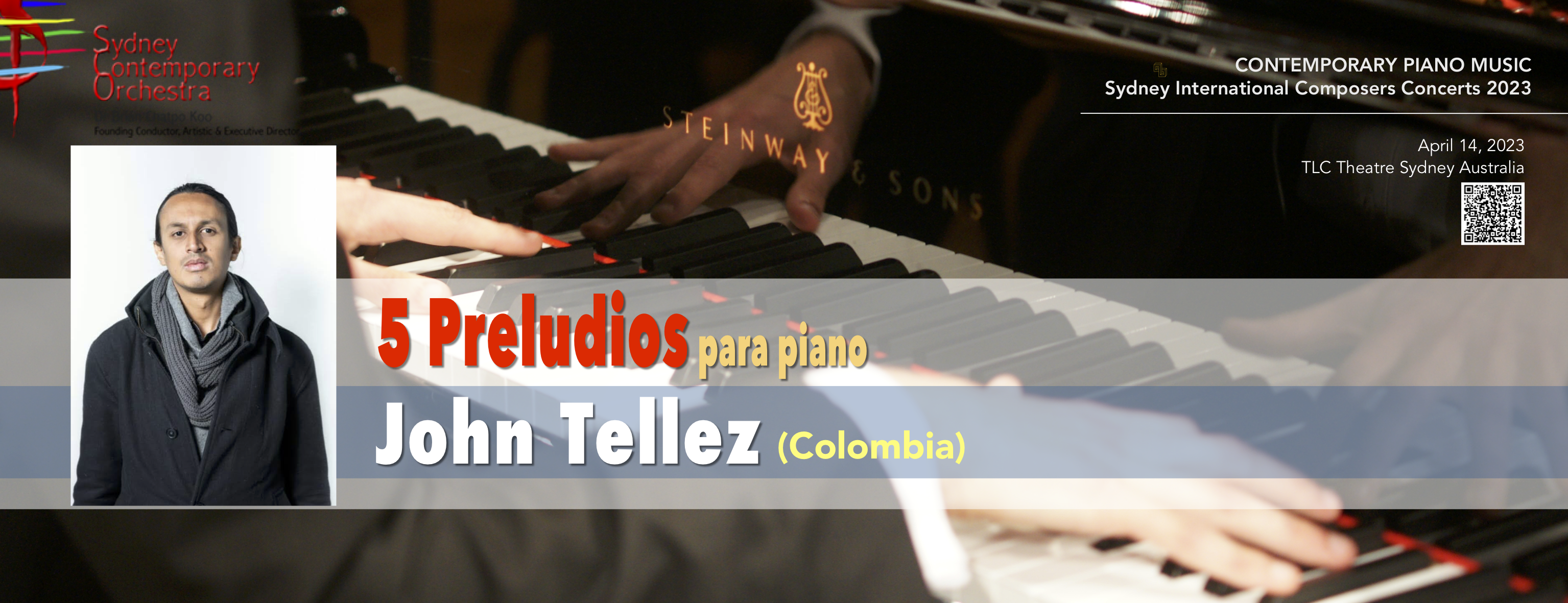John Tellez was born in Bogota, Colombia. At the age of ten, he took his first piano lessons with his uncle-in-law the conductor Pedro Enrique Peña Bernal.
At the age of 15, he began harmony and classical guitar studies with his uncle and he started composing his first compositions. At the same age, he took some lessons with the pianist Cecilia Casas, professor at the Conservatorio de la Universidad Nacional de Colombia and founder of the contemporary music festival of Bogota. One year later he took lessons with pianist and organist Juan Carlos López Peña, a professor at the Conservatorio del Tolima and the Colombian representative at the WPC (world piano conference) in Novi sad (Serbia) in 2018.
In 2012 he began his studies in piano at the Conservatorio de la Universidad Nacional de Colombia and in 2015 he began his studies in composition at the same institution. In the conservatory, he studies composition with Mauricio Arias, Gustavo Parra, Moisès Bertran I Ventejo y Harold Vásquez Castañeda, piano with Piedad Pérez, organ with Mauricio Nasi and theory with Svetlana Skriagina and Alena Krasútskaya.
His music has been performed in Colombia, the Netherlands, and Germany.

Preludes for Piano
The preludes have been thought of as small works in which I seek to work on very few elements. In each of the pieces, I proposed different elements: in the first, I worked with polymodality and a two-voice counterpoint that I endowed with impressionist elements; the second is influenced by minimalist music and consists of a bass ostinato and a melody that is born from the union of two melodic lines; the third consists of four harmonies that are varied throughout the piece; the fourth is based on the change of a synthetic scale on C, which progressively changes to the C major scale; the fifth takes minimalist elements and is based on a harmony of three voices, being the central voice in triads, the one that articulates the form of the piece.
In general, the preludes are characterized by having a small number of rhythmic and melodic motifs, their musical form varies thanks to the improvisational character, for which there was a pre-established formula for the formal structure of the entire work.
